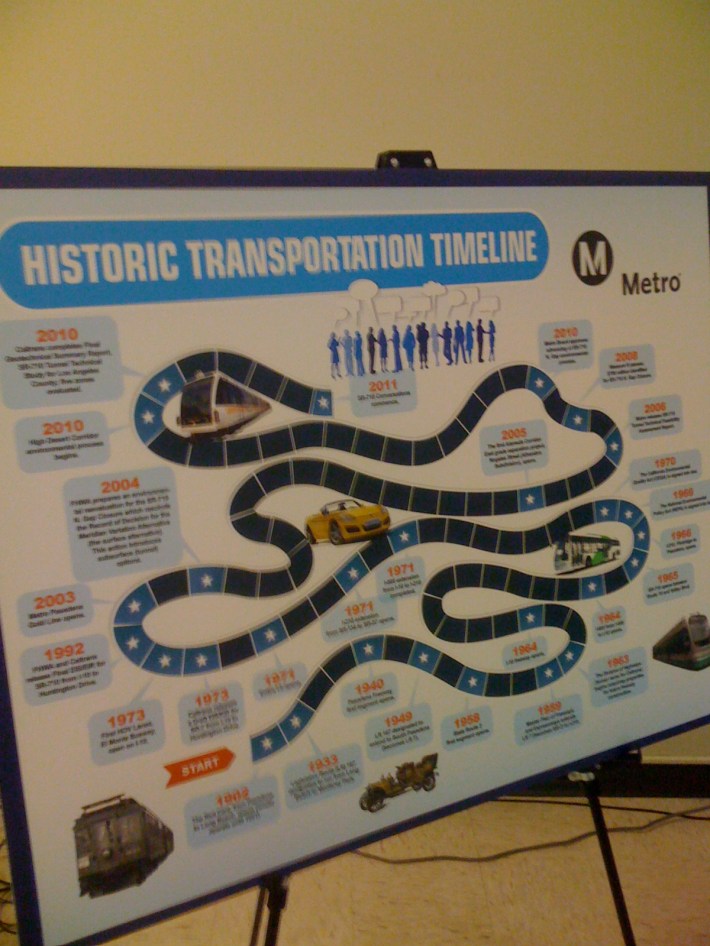It seems suggestive that Metro and Caltran’s just launched SR-710 Conversations public outreach process features a timeline of transportation milestones printed as a board game. It remains to be seen whether it will be a game that the public plays: a creative rethinking of mobility needs in the San Gabriel Valley and Northeast Los Angeles, or a game that plays the public: going through the motions of input on environmental studies for a 710 ‘gap closure’ tunnel that agencies intend to pursue regardless of any alternative proposals.
Metro is holding three sets of pubic meetings. The first, scheduled for the rest of February, is advertised as opportunity to converse on transportation concerns and suggestions. A second set of meetings during early March will provide information on CEQA and NEPA. The third set of meetings in late March will be the opportunity to provide input on scoping for environmental review of the project. (A schedule is available at http://www.metro.net/projects/sr-710-conversations/ - click the upcoming meetings tab.)
I attended the first meeting Tuesday night in San Gabriel. Present were a mix of agency staff and consultants, veterans of the no on 710 campaign, and interested members of the public. I appreciate that Spanish and Chinese translators were present to lead break out groups, but the absence of attendees needing translation implies that outreach in immigrant communities should be stepped up.
Metro officials and public outreach consultants pitched the process as a ‘fresh start’ on a proposed freeway extension project that, according to the handy timeline included in the info packet, has been planned to link Long Beach and Pasadena since 1933. Attendees were divided into three breakout groups to discuss and report back on commons (what we like about our communities), concerns (about transportation in neighborhoods and the region), and considerations (ideas to improve transportation).
People in my breakout group were concerned about heavy traffic on surface streets (on Fremont Ave in particular). No one jumped to the conclusion that we need to increase capacity via an extension of SR-710. Our considerations list was heavy of ways to encourage people to use transit, improve and expand transit, and make streets safe to walk and bike. Meeting organizers have helpfully posted word clouds from breakout group notes on facebook, showing that across all breakout groups, the most discussed solutions were ‘better planning and development,’ ‘better and more accessible public transportation’ and ‘consider alternative modes of transportation.’
I’m skeptical that this consensus in favor of expanded transit and living streets, if it is maintained as public meeting and online engagement continues, will sway the responsible agencies to divert Measure R funds to better projects. But Metro’s description of the ongoing conversation claims that they are open to multi-modal alternatives:
To address this longstanding issue, we are beginning with a fresh perspective to initiate an environmental review process that will focus on a range of solutions to specifically evaluate the effects of the SR 710 gap… These solutions from you can come in any possible form – from maintaining the status quo to considering new infrastructure, from single-modal to multi-modal approaches.
It can’t hurt to tell them what they may not really want to hear: that the era of urban freeways is (or should be) over and that their nearly 70 year old plan for a completed highway should give way to demand for complete streets.








